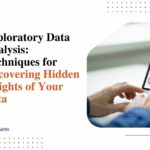8 Deep Insights from Waterfall Analysis: Visualize Data Like a Financial Pro!
Waterfall analysis lets you visualize step-by-step the major factors causing change between two financial figures. A waterfall chart lets you visually bridge the gap between an initial value and an end figure via an engaging cascade of bars. Planners, strategists, and executives across industries rely on waterfall simplicity to seamlessly translate complex figures into understandable graphs revealing key financial drivers—the building blocks of data-driven decision-making. Read on to learn about the eight deep insights from waterfall analysis.
What is Waterfall Analysis?

A waterfall chart, also known as a waterfall graph or bridge graph, is a form of data visualization that shows how an initial value is affected by a series of intermediate positive and negative values. The waterfall allows you to break down the components of a cumulative effect and visualize the incremental impact of individual factors.
In finance, waterfall analysis is used to bridge the gap between two financial figures, and visually map out the individual elements responsible for the difference between them.
How to Create a Waterfall Chart
While waterfall charts can be created manually, using a dedicated waterfall chart software or a feature in Excel makes it easier. Here are the key steps involved:
- Choose the starting and ending values: This forms the two banks representing the initial and final figures you intend to analyze.
- Decide on the intermediate components: These factors are responsible for causing the change between your two figures. List them in logical order.
- Categorize driving factors: Break down components into those adding value and those deducting value. Color code them differently for easy distinction.
- Create bars representing each factor: The height of each bar depicts the incremental impact of that component towards your final figure.
- Connect the bars to map the flow: Visually bridge together bars in sequence to create a cascading waterfall from initial to end value.
With these steps, you can easily create stunning waterfall charts to represent financial data in a reader-friendly visual format. Now let’s explore the key insights they provide:
Deep Insights from Waterfall Analysis
Insight 1: Visualizing Cumulative Impact
The key value of waterfall analysis comes from visualizing the sequence of changes between two figures rather than just the net change. This allows more informed business decisions by revealing the combined impact of multiple swing factors instead of observing them in isolation.
For example, the sales department at a software company might see a 10% revenue drop from Q1 to Q2. A waterfall chart investigating this change would reveal that new customer conversions actually increased sales by 5%, while downgrade and churn of existing clients together caused a 15% negative swing.
Without the cumulative picture that the waterfall provides, changing conversion rates may have wrongly been identified as the key driver of lost revenue. Similarly, departments often take credit for standalone improvements without recognizing their positive impact being offset by negative activities elsewhere.
Insight 2: Identifying Key Drivers of Change
The size and positioning of bars in a waterfall chart immediately directs attention to segments that likely were the key drivers influencing your final figure. Simply sorting components by size also helps instantly spotlight the largest positive and negative contributors to investigated change.
For the software company above, the first priority would be addressing customer retention rather than trying to further boost new user conversions. The granular breakdown of the two retention metrics also allows targeted diagnosis. Seeing that expired free trial users caused a bigger hit than subscribers canceling mid-contract informs retention efforts to prevent trial fall-off specifically.
Easy visualization of the few vital forces at play makes waterfall analysis invaluable for separating signal from noise. Executives can instantly pinpoint areas that likely need urgent action, as opposed to those having only marginal impact.
Insight 3: Simplifying Complex Financial Data
By breaking down cumbersome figures into understandable visual chunks, waterfall charts turn complex financial data easier for senior leadership to grasp. Instead of needing to parse sheets of detailed calculations, decision-makers can clearly spot major levers from a simple one-page waterfall graphic.
For example, a private equity firm can use a waterfall to map the components of investment returns. Visualizing the sequence of deductions, such as management fees or interest expenses, flowing down to net proceeds distributed to investors simplifies the analysis of areas with margin for optimization.
Rather than demanding extensive financial modeling expertise, waterfall simplicity makes data implications more accessible. Presenting driving figures visually also makes financial analysis inclusive for broader stakeholders, like operations or marketing teams.
Insight 4: Enhancing Decision-Making
Better visualization leads to better business strategy. Research shows that decision-making groups provided with data visualizations develop more accurate, fact-based rationales for their choices. Charts help balance gut feelings with evidence-based logic. Waterfalls can make hypothetical scenarios tangible for operational leaders – facilitating fact-based planning dialogue instead of theoretical discussion and debate.
Insight 5: Forecasting and Budgeting
Waterfall analysis helps make pro forma budgeting projections less speculative by grounding them in traceable precedents. After investigating actual performance drivers over prior periods, similar sequential logic can be utilized to model likely outcomes of planned future activity.
For example, the sales funnel waterfall for closing new enterprise clients might show that a 20% lift in whitepaper downloads tends to trickle up into 10% more sales inquiries, subsequently converting 5% more quarterly deals on average. Planning for a 25% increase in content marketing spend could now accurately link that activity to an incremental budgeted sales target.
Predictions become less ambiguous with a visualized model tracing historical cause-and-effect already mapped. By lending structure to budget assumptions, waterfall forecasts align stakeholders on activity linkages and targets.
Insight 6: Communicating Financial Performance
Simplifying complex situations into relatable pictures allows easier sharing of financial results and goals across the organization. Charts are universally understood regardless of background, bypassing confusion from intimidating spreadsheets full of numbers or confusing tables.
Waterfall insights can fuel data storytelling that inspires staff by connecting their day-to-day work to the company’s overarching financial performance. Customer service teams should recognize that preventing subscription cancellations contributes as much to the margin as closing new accounts that sales achieve.
Less productive groups receive more constructive feedback if underperformance is illustrated through neutral waterfall visualization rather than top-down criticism. Presenting year-over-year comparisons allows lagging departments to visually identify priority spots for their own improvement in subsequent periods.
Insight 7: Identifying Risk and Opportunities
Waterfall analysis reveals the sensitivity between output figures and their underlying drivers—the risks and opportunities hidden within your data. Strategic weaknesses or competitive advantages are exposed when a single input factor creates an outsized swing in end outcomes.
For example, a company may realize that losing a single major client would deflate revenue by almost 25% annually. Such customer concentration risks can be addressed by using waterfalls to set targets for better diversifying the client mix.
Conversely, data might show Login Enterprise making up over 40% of subscription volumes despite only moderate sales and marketing activity spent on acquiring them. Waterfall analysis thus presents significant incremental revenue potential from doubling down specifically on this undertapped customer segment.
By quantifying the leverage that key inputs have on outputs, waterfalls help redirect resources towards the most promising opportunities while also proactively mitigating the biggest vulnerabilities. Data-driven insights allow playing both offense and defense.
Insight 8: Real-Time Data Analysis
Traditional waterfall analysis uses static year-on-year, powerful, but still retrospective comparisons. However, combining waterfalls with live dashboards allows dynamic analysis of emerging trends as they unfold.
For example, an e-commerce site can have a real-time waterfall showing the impact of various marketing campaigns on conversions over the last month. Drops in website traffic and shrinkage in average order value metrics can instantly alert when short-term performance deviates from past trends.
Real-time waterfalls empower teams to course-correct strategy even as market response changes instead of waiting for quarterly reports. Speed is critical to seizing fleeting opportunities in a dynamic landscape, and data-enabled agility fuels competitive firepower.
Conclusion
Waterfall analysis combines the best aspects of data visualization, financial modeling, and business strategy into an insightful multi-purpose tool. Accounting teams use waterfalls to bridge gaps in past performance, strategists model future decisions with what-if forecasts, while leadership leverages waterfall simplicity to drive enterprise-wide execution.
With compelling visuals distilling multifaceted situations down to their key drivers, waterfall insights unlock potential otherwise hidden within plain data. Mastering waterfall flows allows organizations to spot pivots and possibilities before less visually attuned competitors. And in today’s dynamic world, the sharpest decision-makers hold a crucial edge.







